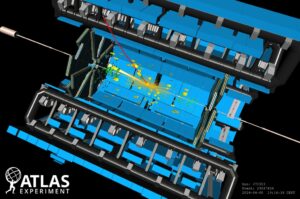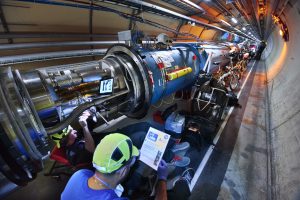The Large Hadron Collider accelerator at CERN in Geneva has been back in operation since Friday night. In this third year of this Run3, the intensity of the beam at full power is higher than ever.
At 6:25 p.m. Friday, April 5, the control room of the LHC accelerator officially announced that after the usual winter shutdown, the new measurement season at CERN has begun. The four major experiments at the lab, ATLAS, LHCb, ALICE and CMS all reported the first collisions in the detectors.

Nikhef is a partner in all experiments except CMS. During the past winter break, the LHCb experiment replaced the central VELO detector, which had previously been damaged in an incident. Nikhef played a central role in these repairs.
The Large Hadron Collider is the world’s largest particle accelerator with a circumference of 27 kilometers and thousands of deflection magnets. For protons, the maximum collision energy is 14 TeV on paper, and 13.6 TeV in practice.
The accelerator now works at the maximum energy for protons, per beam 6.8 TeV. In October, the machine will accelerate not protons but heavy lead nuclei, particularly for the ALICE experiment studying quark-gluon plasmas.
The accelerator’s restart had been prepared for months and came a few days earlier than the April 8 date previously anticipated. During the previous two months, the pre-accelerators were turned on and tuned up step by step.
The status of the accelerator can be followed live on a special web page Vistars: https://op-webtools.web.cern.ch/vistar/?usr=LHC1: The proton beams are not permanently present in the accelerator.
Occasionally they are dumped and a new cycle begins. Preparing a new beam is an incremental process, first squeezing the beam further with magnets at lower energy.

After this last round of measurements including 2025, the LHC will go out of operation for an extended period of time for a major modification. The system will then be made suitable for even more intense beams.
The so-called high luminosity LHC (HL-LHC) should come into operation in early 2029 and then deliver ten times more proton collisions than the existing LHC, mainly for precision measurements of the Higgs particle and in the search for clues to new particles.